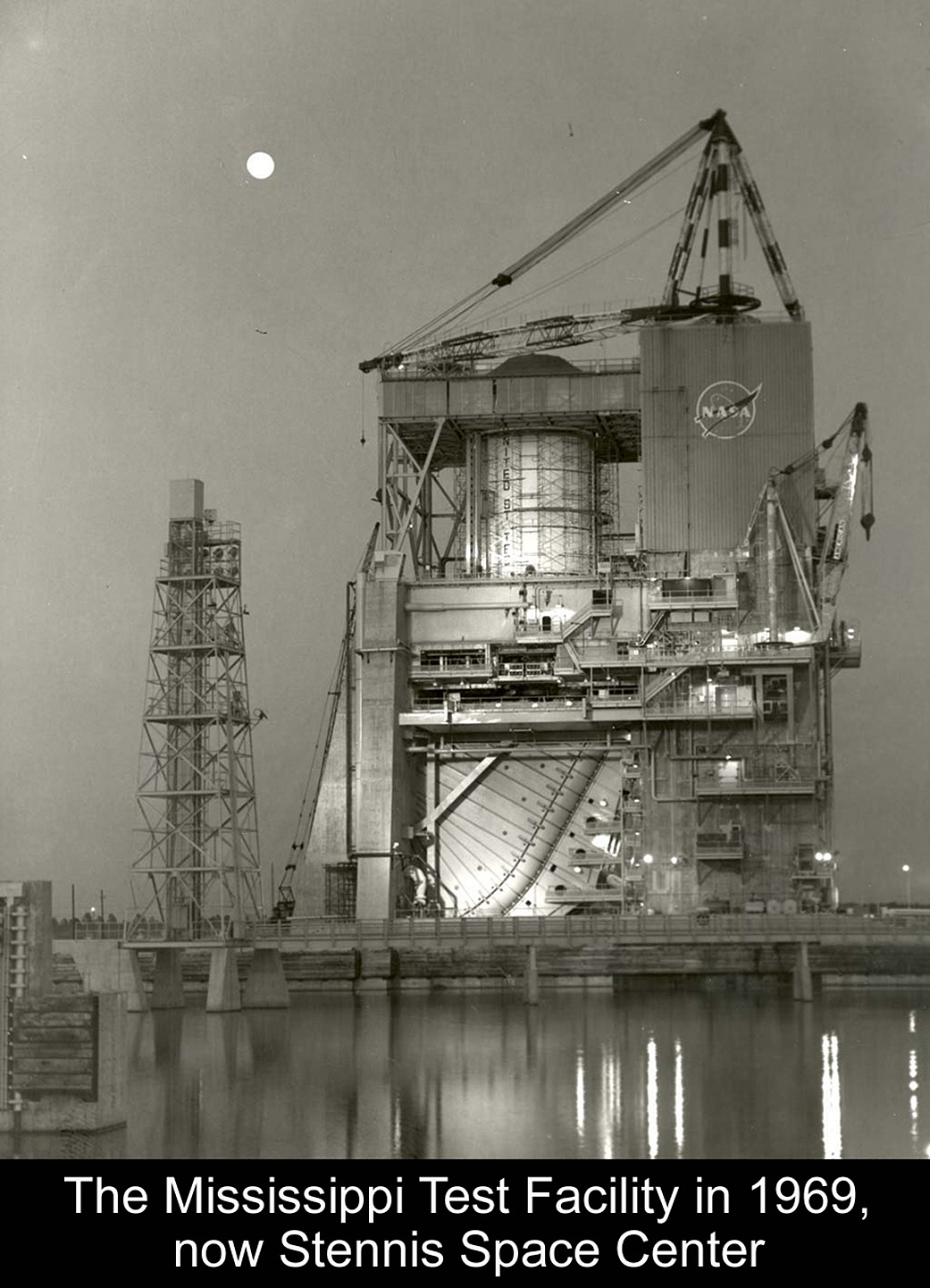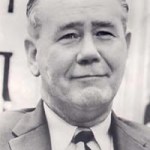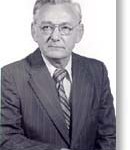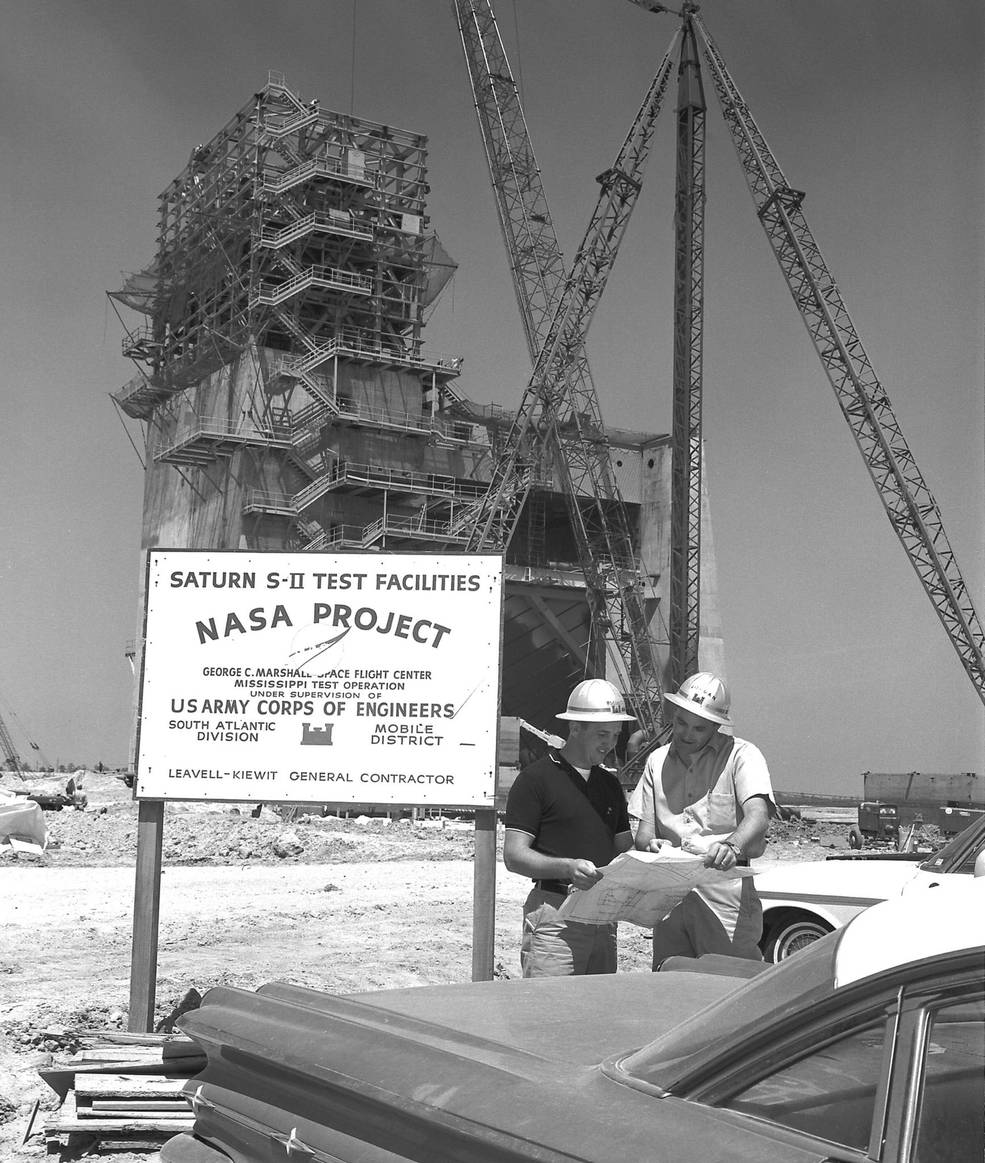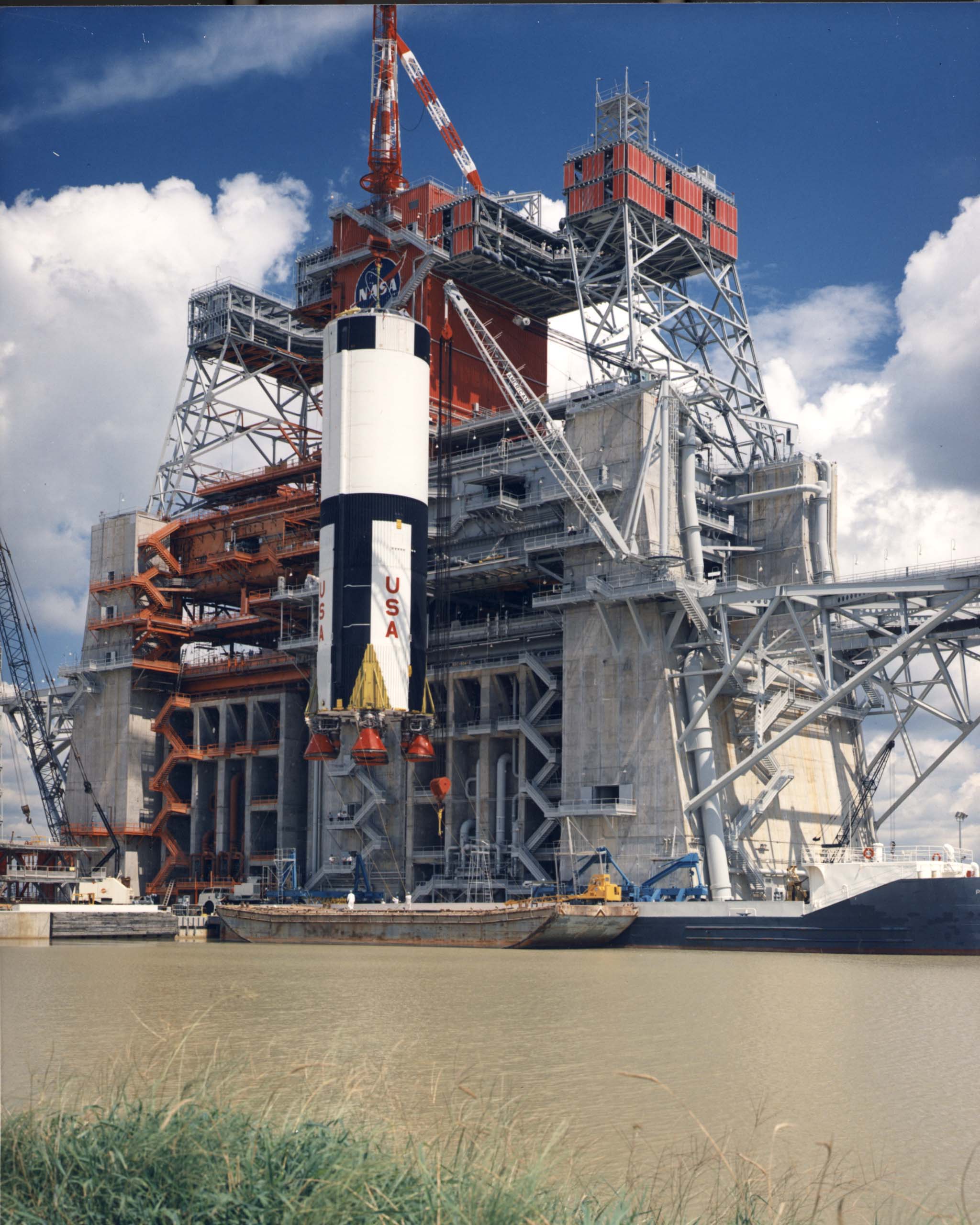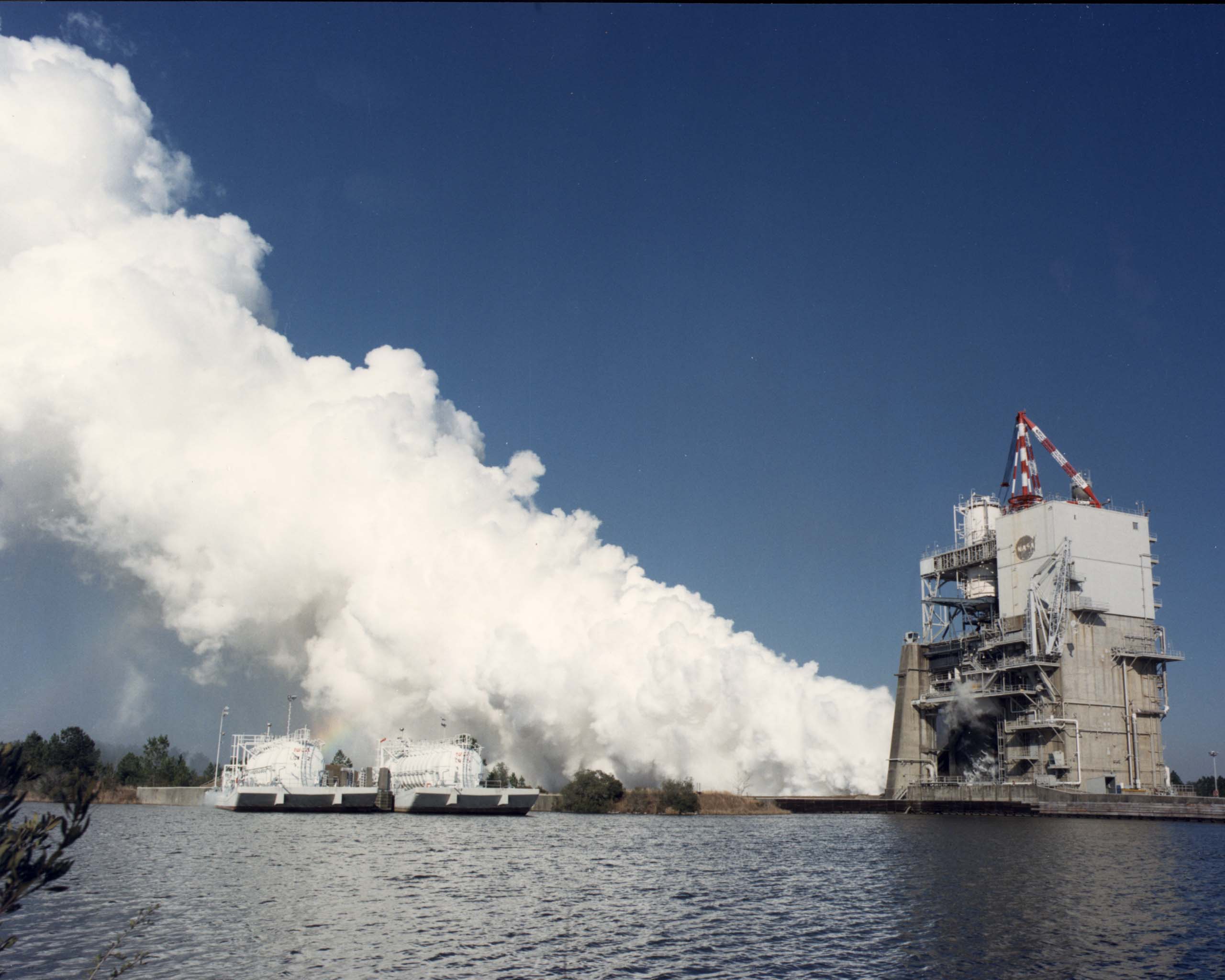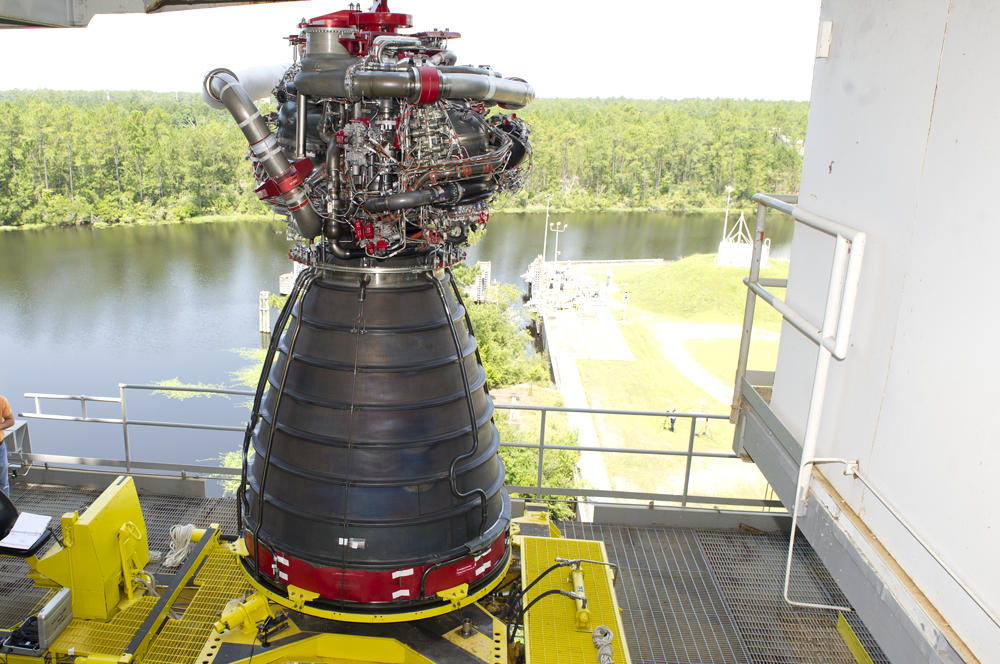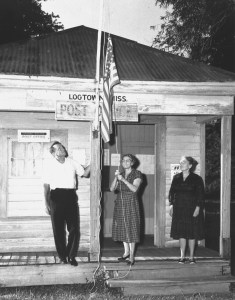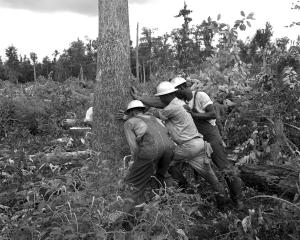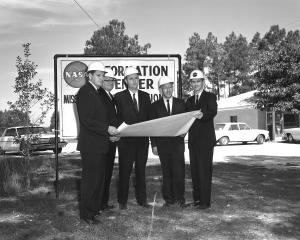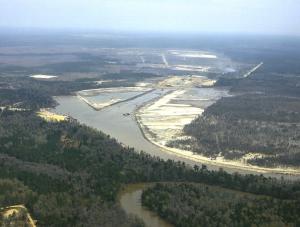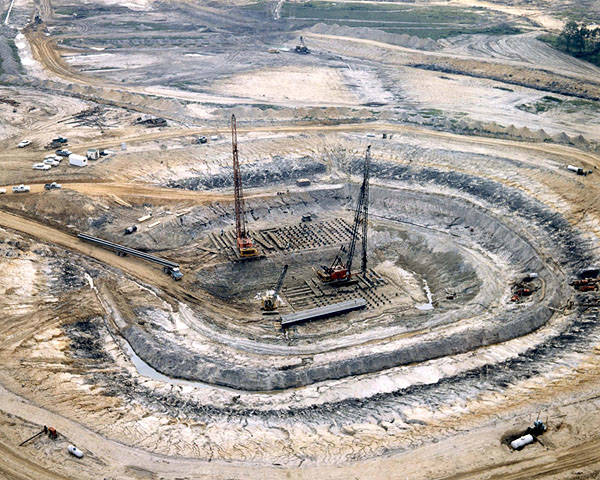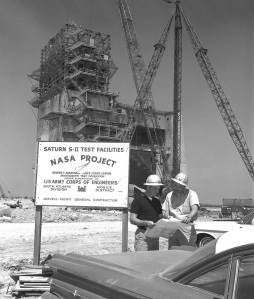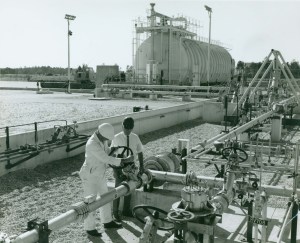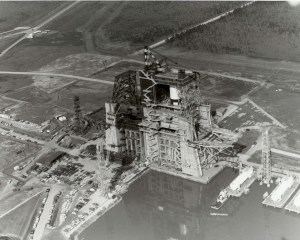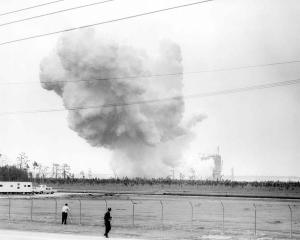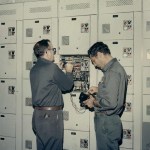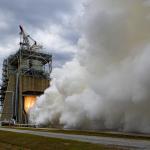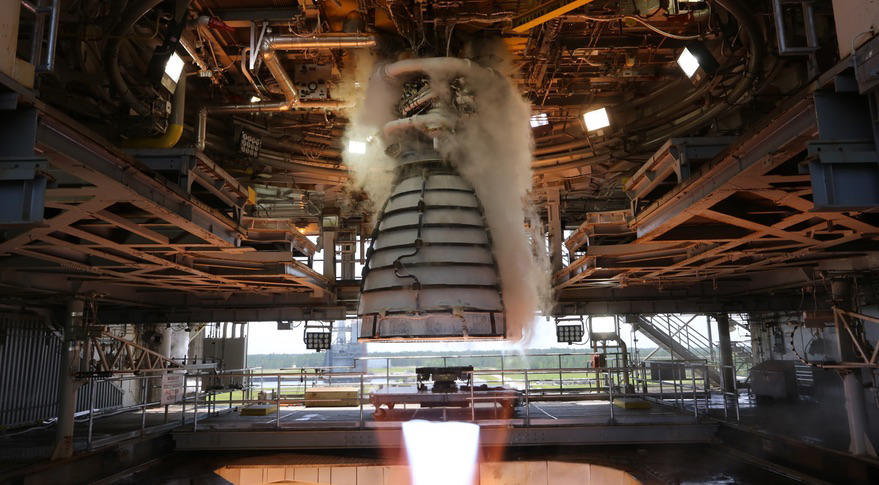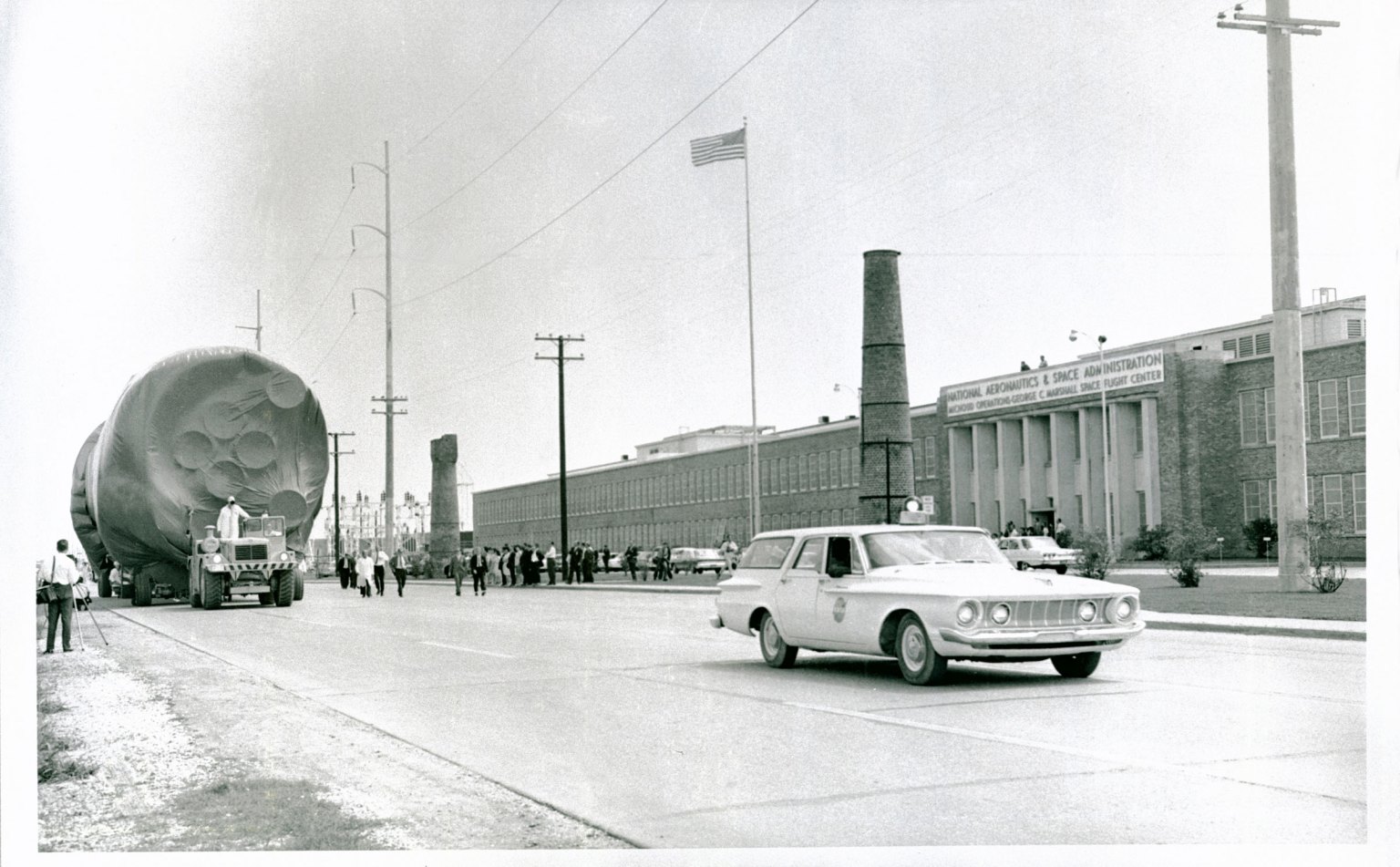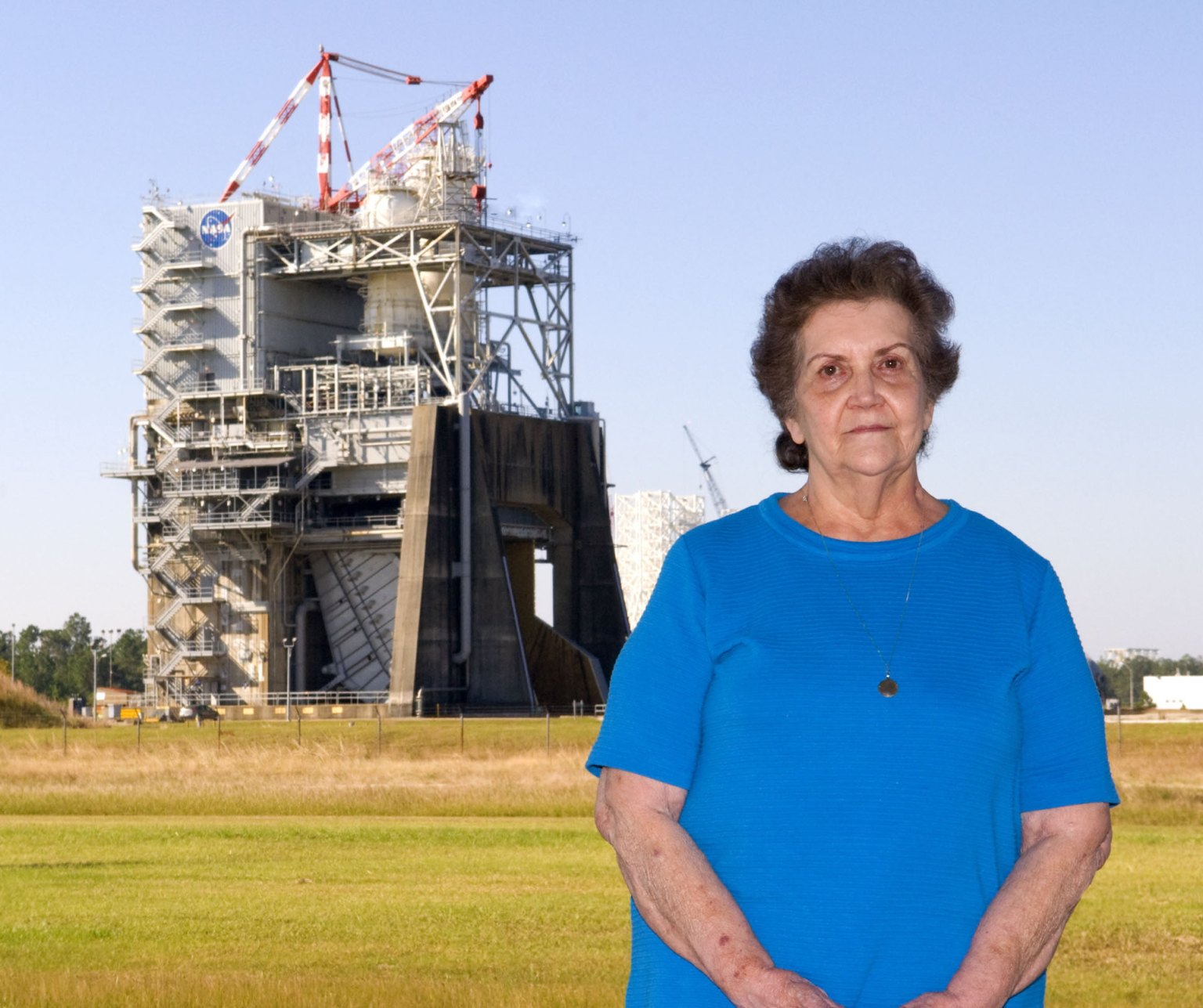NASA Stennis Center Directors 1962–present
Modern-day Explorers
In the late 1960s and early 1970s, there was an old saying around the community, “If you want to go to the Moon, you first have to go through Hancock County, Mississippi”
The site known today as NASA’s Stennis Space Center boasts a rich and colorful history dating as far back as 1699. Indians, settlers, pirates, and soldiers shaped this part of Mississippi, which now hosts modern-day explorers.
In the decades before the space age arrived, the old towns of Gainesville, Napoleon, Santa Rosa, Logtown and Westonia formed a logging and shipping center along the scenic East Pearl River. In time, these settlements gave way to a more high-tech network involving space, oceans, and Earth.
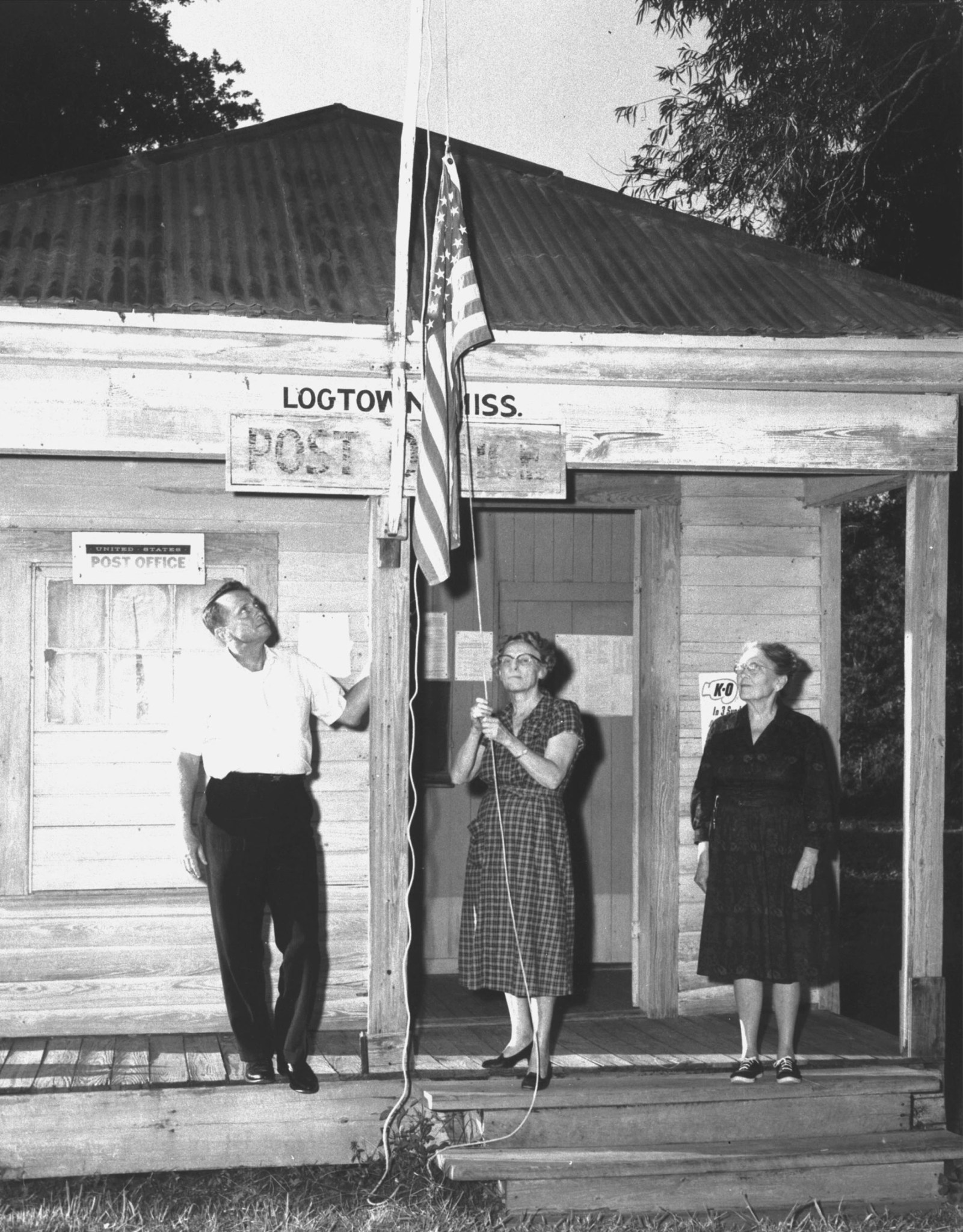
Early Construction
In October 1961, a historic announcement was made: the federal government had selected an area in Hancock County, Mississippi, to be the site of a static-fire test facility for launch vehicles to be used in the Apollo Program that would land the first humans on the Moon.
It was the largest construction project in the state of Mississippi at the time – and the second largest in the United States.
However, less than eight years later, astronauts Neil Armstrong and Buzz Aldrin walked on the lunar surface, safely transported thousands of miles by a space vehicle whose boosters were tested and proven flightworthy at NASA Stennis.
The selection of the Mississippi site was a logical and practical one. The land offered water access, essential for transporting large rocket stages, components, and loads of propellants. It also provided the 13,800-acre test facility with an acoustical buffer zone of close to 125,000 acres, which is still considered a national asset.
The center’s primary mission at the onset was to test all Saturn V first and second stages for the Apollo program. The effort began with a static test firing on April 23, 1966, and continued into the early 1970s.
It is a testimony to the effectiveness of the testing at NASA Stennis that all the Apollo space vehicle boosters, including those for the Apollo 11 mission that landing the first humans on the Moon. performed as needed without a single failure.
A New Chapter
A new chapter was added in June 1975 when a space shuttle main engine was tested for the first time at NASA Stennis. All the engines used to boost the space shuttle into low-Earth orbit were subsequently tested on the same stands used to test fire the Saturn V first and second stages for Apollo and Skylab missions. Space shuttle main engine testing was conducted by the center for 34 years, from 1975 to 2009.
With the end of the Space Shuttle Program in 2011, NASA turned its full attention to returning humans to deep space exploration. Once again, NASA Stennis is responsible for testing engines and systems that will make such missions possible. All RS-25 engines to power the core stage of NASA’s SLS (Space Launch System) rocket will be tested on the Fred Haise (formerly A-1) Test Stand onsite. The center also tested the SLS core stage that launched the Artemis I mission in 2022 and will test NASA’s new Exploration Upper Stage that will fly on future Artemis missions.
Over the years, NASA Stennis also has evolved into a multidisciplinary facility comprised of more than 40 other resident agencies, including the U.S. Navy and others, engaged in aerospace, technology, and related work. The onsite agencies, organizations, universities, and companies share operating costs, while pursuing individual missions, as a model of fiscal efficiency. The center also has established itself as a leader in working with commercial aerospace companies to help support their space missions. It now is focused on continuing its world-class propulsion work, while also expanding its federal city operations and advancing in areas of work that include intelligent and autonomous systems, as well as air, ground, and marine range operations.
Way Station to Space: The History of Stennis Space Center
The video traces the history of NASA’s Stennis Space Center from its origins as a test facility for President Kennedy’s initiative to land humans on the Moon through the early 1990s.
Learn More About the Way Station to Space

























